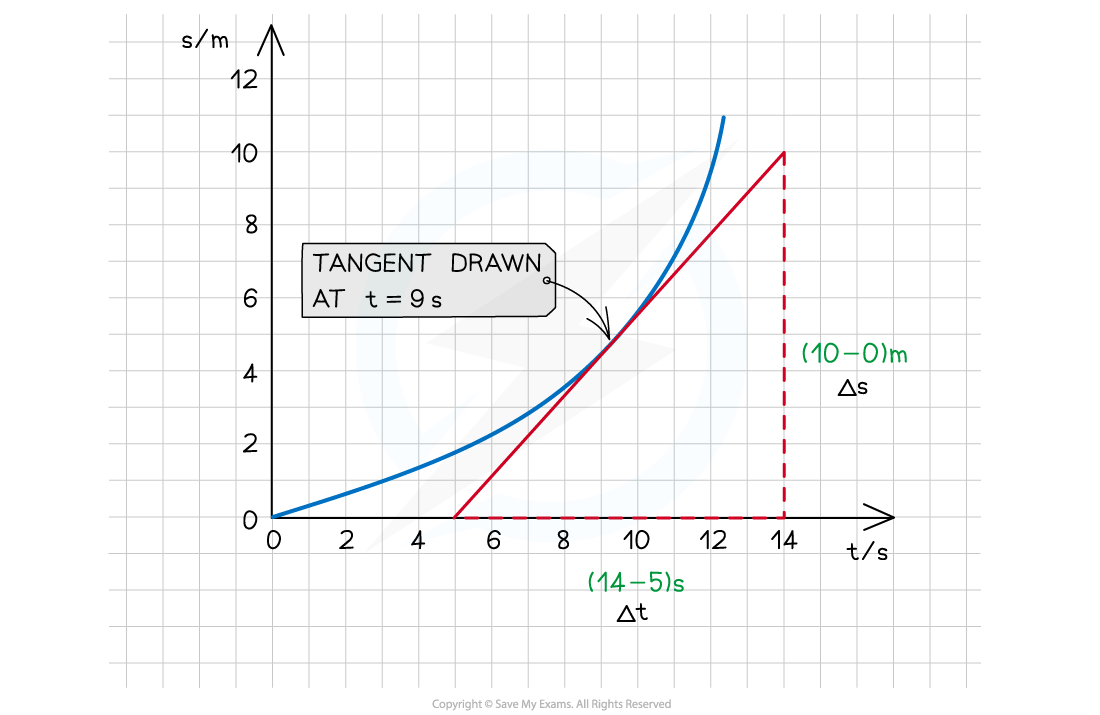Speed & Velocity (DP IB Physics) : Revision Note
Speed & Velocity
Speed
The speed of an object is the distance it travels every second
Speed is a scalar quantity
This is because it only contains a magnitude (without a direction)
The average speed of an object is given by the equation:
The SI units for speed are meters per second (m s−1) but speed can often be measured in alternative units e.g. km h−1 or mph, when it is more appropriate for the situation
Velocity
The velocity of a moving object is similar to its speed and also describes the direction of the velocity
Velocity is defined as:
The rate of change of displacement
Velocity is, therefore, a vector quantity because it describes both magnitude and direction
The difference between speed and velocity
Speed is a scalar quantity whilst velocity is vector
Velocity is the speed in a given direction

The cars in the diagram above have the same speed (a scalar quantity) but different velocities (a vector quantity). Fear not, they are in different lanes!
This means velocity can also have a negative value
E.g. a ball thrown upwards at a velocity of 3 m s–1 comes down at a velocity –5 m s–1, if upwards is considered positive
However, their speeds are still 3 m s–1 and 5 m s–1 respectively
Instantaneous Speed & Velocity
The instantaneous speed (or velocity) is the speed (or velocity) of an object at any given point in time
This could be for an object moving at a constant velocity or accelerating
An object at constant velocity is shown by a straight line on a displacement – time graph
An object accelerating is shown by a curved line on a displacement – time graph
An accelerating object will have a changing velocity
To find the instantaneous velocity on a displacement-time graph:
Draw a tangent at the required time
Calculate the gradient of that tangent

The instantaneous velocity is found by drawing a tangent on the displacement time graph
In the graph above, at t = 9 s, the velocity is:
Average Speed & Velocity
The average velocity
of an object can be calculated using
Where:
= total displacement, or change in position (m)
= total time taken (s)
If the initial velocity u and final velocity v are known, the average velocity can also be calculated from
To find the average velocity on a displacement-time graph, divide the total displacement (on the y-axis) by the total time (on the x-axis)
This method can be used for both a curved or a straight line on a displacement-time graph
Worked Example
Florence Griffith Joyner set the women’s 100 m world record in 1988, with a time of 10.49 s.
Calculate her average speed during the race.
Answer:
Sprinters typically speed up from rest to a maximum speed
Because Florence’s speed changes over the course of the race, we can calculate her average speed using the equation:
average speed = total distance ÷ time taken
Where:
Total distance, s = 100 m
Time taken, t = 10.49 s
average speed = 100 ÷ 10.49 = 9.5328 = 9.53 m s−1
Worked Example
The variation of displacement of a box sliding across a rough surface with time t is shown on the graph below.

The magnitudes of the instantaneous velocities of the trolley at time t1 and t2 are v1 and v2 respectively.
List the following velocities in order from fastest to slowest:
v1 | v2 | average velocity |
Answer:
Step 1: Sketch the velocities from the graph
The instantaneous velocity is the gradient of a tangent at a certain time

The average velocity is the total displacement over the total time
Step 2: Compare the gradients of each velocity
The fastest velocity will have the steepest gradient and the slowest velocity the shallowest gradient
In order from fastest to slowest:
v1 > average velocity > v2
Examiner Tips and Tricks
When you draw a tangent to a curve, make sure it just touches the point at which you wish to calculate the gradient. The angle between the curve and the tangent line should be roughly equal on both sides of the point.
If you are asked to find the instantaneous velocity from a graph, you will be told the time at which they want this velocity for.

You've read 0 of your 5 free revision notes this week
Sign up now. It’s free!
Did this page help you?
